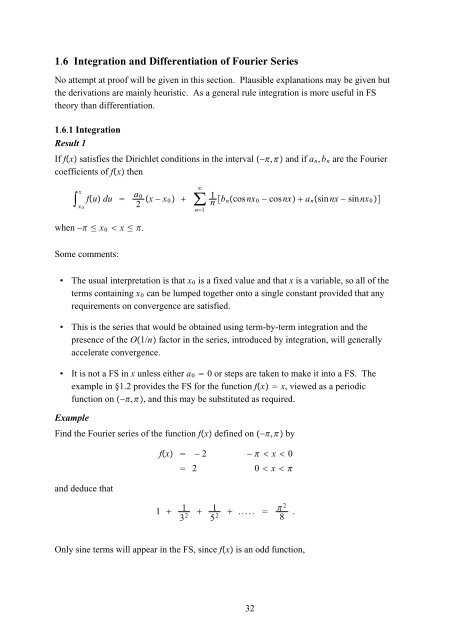Fourier Series
Fourier Series
Fourier Series
You also want an ePaper? Increase the reach of your titles
YUMPU automatically turns print PDFs into web optimized ePapers that Google loves.
1.6 Integration and Differentiation of <strong>Fourier</strong> <strong>Series</strong>No attempt at proof will be given in this section. Plausible explanations may be given butthe derivations are mainly heuristic. As a general rule integration is more useful in FStheory than differentiation.1.6.1 IntegrationResult 1If fx satisfies the Dirichlet conditions in the interval −, and if a n ,b n are the <strong>Fourier</strong>coefficients of fx thenx fu du a 0x − xx020 ∑n11n b n cosnx 0 − cosnx a n sinnx − sinnx 0 when − ≤ x 0 x ≤ .Some comments:• The usual interpretation is that x 0 is a fixed value and that x is a variable, so all of theterms containing x 0 can be lumped together onto a single constant provided that anyrequirements on convergence are satisfied.• This is the series that would be obtained using term-by-term integration and thepresence of the O1/n factor in the series, introduced by integration, will generallyaccelerate convergence.• It is not a FS in x unless either a 0 0 or steps are taken to make it into a FS. Theexample in §1.2 provides the FS for the function fx x, viewed as a periodicfunction on −,, and this may be substituted as required.ExampleFind the <strong>Fourier</strong> series of the function fx defined on −, byand deduce thatfx − 2 − x 0 20 x 1 13 2 15 2 ..... 28 .Only sine terms will appear in the FS, since fx is an odd function,32
















